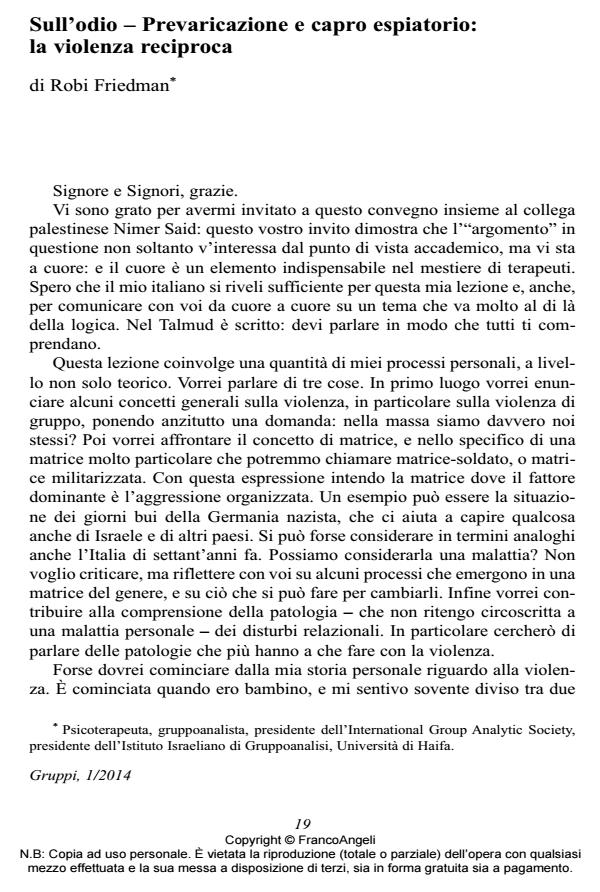On hatred - Abuse and scapegoats: mutual violence
Journal title GRUPPI
Author/s Robi Friedman
Publishing Year 2014 Issue 2014/1
Language Italian Pages 12 P. 19-30 File size 95 KB
DOI 10.3280/GRU2014-001003
DOI is like a bar code for intellectual property: to have more infomation
click here
Below, you can see the article first page
If you want to buy this article in PDF format, you can do it, following the instructions to buy download credits

FrancoAngeli is member of Publishers International Linking Association, Inc (PILA), a not-for-profit association which run the CrossRef service enabling links to and from online scholarly content.
The question of violence should be considered both on a personal and on a group level. When the individual is under the total influence of his society, it is extremely difficult to separate between his feelings and attitudes from his Matrix attitudes. Defining a "Soldiers- Matrix" in which all members of a Society are enlisted physically and mentally in their struggle helps to understand everyone’s position and identification. In the article we will question the topic of "regression" in Large Groups or Masses. It may be closer to psychic reality to say that the individual switches to a different State of Mind when he/she is under the influence of the Soldiers’ Matrix, entering a culture in which there is no place for guilt, shame nor empathy for others (and sometimes oneself and one’s close ones). It would be ‘regressive’ not to become identified with the Large Group, which is enormously influential on the individual. Violence is especially common when a group or society goes through a relational disorder of scapegoating. What can be done to change this situation and re-introduce guilt, shame and empathy in order to transform the LG back into a co-existing entity? How do we address unconscious feelings of annihilation anxiety and the fundamental collective unconscious of fear of rejection?
Keywords: Group analysis, violence, soldiers’ matrix, scapegoating, relation disorders, large group.
Robi Friedman, Sull’odio - Prevaricazione e capro espiatorio: la violenza reciproca in "GRUPPI" 1/2014, pp 19-30, DOI: 10.3280/GRU2014-001003